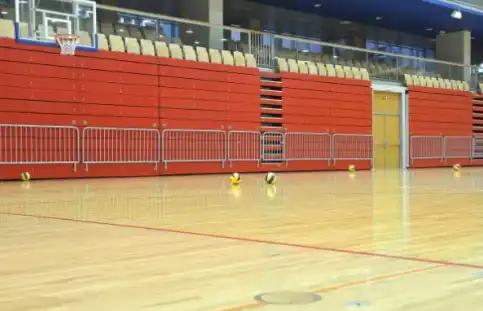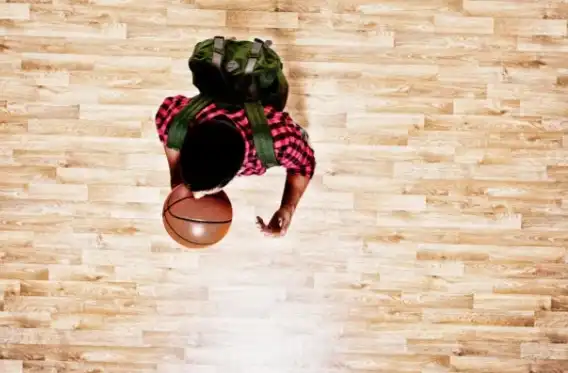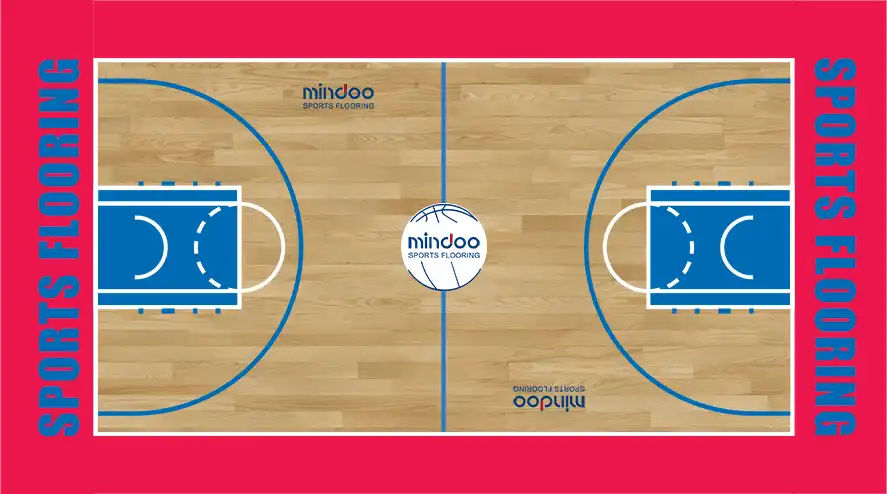What Are the Advantages of Oak Flooring Compared to Other Hardwood Floors?
In the field of sports flooring, particularly in indoor sports venues such as basketball courts and badminton courts, oak flooring has become a preferred material for many facilities due to its excellent performance and natural characteristics. Compared to other commonly used sports flooring materials (such as rubber, PVC, composite wood, etc.), oak flooring offers the following significant advantages:

1. Outstanding Elasticity and Resilience
Oak flooring has a moderate hardness and density, providing excellent elasticity during sports. It effectively absorbs the impact on athletes, reducing pressure on knees and joints. This elasticity ensures greater comfort during rapid movement, jumping, and directional changes, consequently reducing the risk of sports injuries.
2. Excellent Anti-Slip Performance
The natural grain of oak provides good friction, preventing athletes from slipping easily during sports activities. This is particularly beneficial in fast-paced sports like basketball or badminton, where superior anti-slip performance enables athletes to maintain firm footing, enhancing performance.
3. Durable and Wear-Resistant
Compared to other types of wood, oak has a higher hardness and better resistance to wear and tear. Sports flooring is frequently subjected to heavy friction and impacts, but oak flooring maintains its longevity under these conditions without easily deforming or wearing out.
4. Superior Sound Absorption
Due to its unique material properties and structure, oak flooring effectively reduces noise generated by activities such as jumping and running. This helps minimize echoes within sports venues, creating a more comfortable acoustic environment while lowering external noise disturbances.
5. Natural Aesthetic Appeal and Comfort
The natural grain and color of oak flooring add visual appeal to sports venues, creating a warm and comfortable atmosphere. Training or competing in such an environment provides an enhanced sense of psychological well-being, potentially leading to better athletic performance.

6. Strong Environmental Adaptability
Oak flooring adapts well to changes in temperature and humidity, offering excellent stability. This is particularly important in sports venues, where environmental factors can affect flooring performance. In contrast, synthetic materials may experience expansion or contraction under fluctuating conditions, whereas oak flooring remains consistently stable.
7. Eco-Friendly and Health-Conscious
As a natural material, oak is more eco-friendly than chemically synthesized sports flooring materials (such as PVC or certain plastics). It does not contain harmful substances and does not release toxic gases into the air, providing a healthier environment for sports activities.
8. Easy Maintenance and Upkeep
The surface of oak flooring is easy to clean. Regular waxing and maintenance can preserve its smooth surface and optimal performance. For sports venues, proper upkeep can extend the flooring’s lifespan and reduce wear over time.
9. Exceptional Stability
With its high material density and compact structure, oak flooring resists deformation under heavy pressure. This provides athletes with a stable platform to perform, minimizing the risk of accidents caused by uneven surfaces.
Oak flooring’s advantages in the sports flooring industry are evident in its elasticity, durability, anti-slip qualities, sound absorption, and eco-friendliness. It provides a comfortable, stable, and safe sporting environment, making it particularly suitable for venues that demand high-performance and long-lasting materials, such as basketball courts and badminton courts. Its natural properties and excellent user experience make oak flooring an ideal choice for many professional sports venues.





